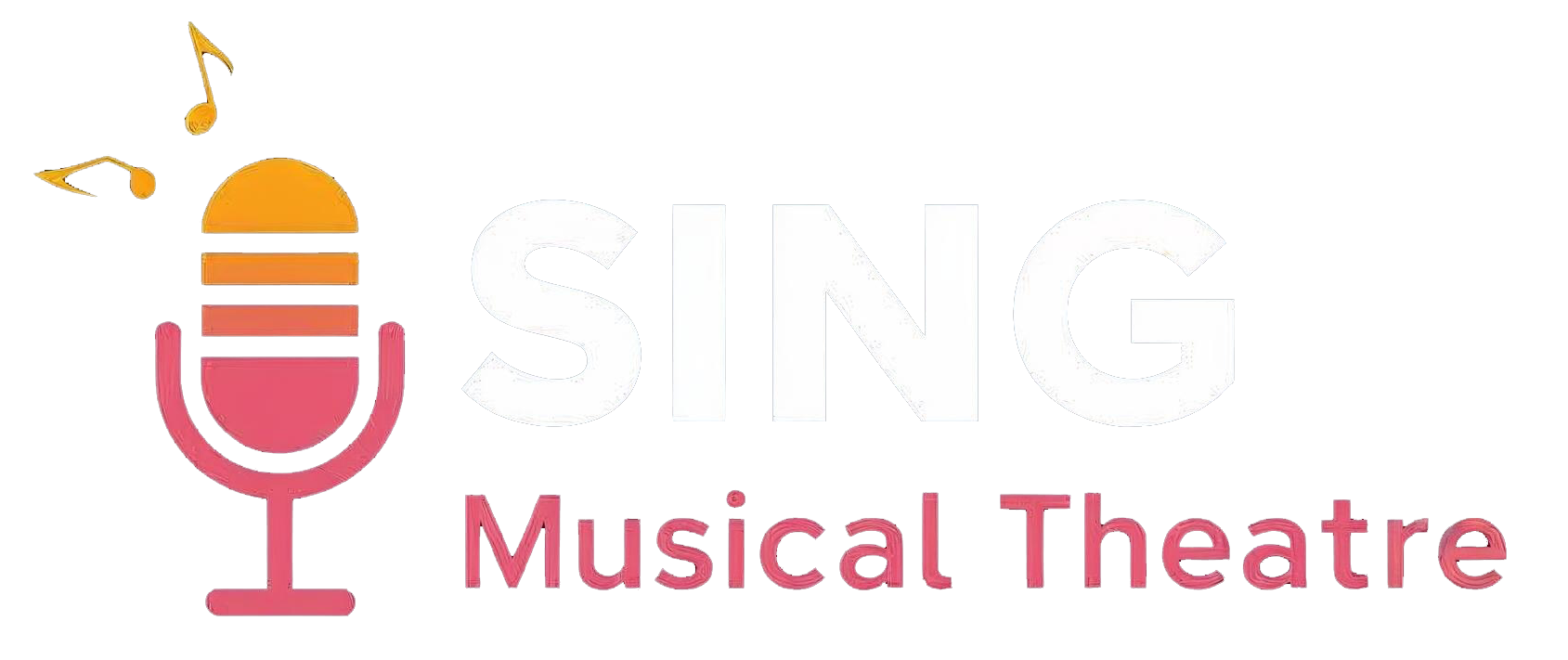MOSAIC Acting Method
A Contemporary
Musical Theatre Acting Approach

Focus keyword: MOSAIC Method musical theatre acting
MOSAIC = Motivation (Stanislavski objective) + Observation (Meisner listening) + Structure (Shakespearean rhetoric & beat scoring) + Action (Practical Aesthetics tactics) + Imagination (Adler/Chekhov) + Condition (Linklater/Alexander voice-body freedom).
Contents
- Why a unified method now
- Six pillars mapped to ten masters
- The MOSAIC workflow (songs, scenes, auditions)
- Scoring music with actions
- Exercises and class drills
- 16/32-bar audition playbook
- Beat-map worksheet
- Common pitfalls and fixes
- FAQ
Why a unified method now
Modern musical theatre demands actors who can argue through lyric, pivot tactics on harmonic turns, and sing with free, resonant voices that read intention from the back row to the close-up camera; the MOSAIC Method consolidates proven tools into one repeatable process that serves both artistry and stamina.
Six pillars mapped to ten masters
- Motivation — Stanislavski: objective, given circumstances, playable beats.
- Observation — Meisner: truthful reactivity, repetition, partner-led adjustments.
- Structure — Shakespeare/Rhetoric + Practical Aesthetics: argument, scansion, actions from text, clear units.
- Action — Practical Aesthetics + Hagen: transitive verbs, substitution when useful, concrete object work.
- Imagination — Adler + Michael Chekhov: Magic If, expansive circumstances, psychological gesture.
- Condition — Alexander + Linklater: tension release, alignment, breath-to-impulse, natural resonance.
The MOSAIC workflow
1) Discover: circumstances, objective, Magic If
- Write a five-line snapshot: who, where, when, what just happened, what changes.
- State one objective on a partner: “Make her stay,” “Win their vote,” “Clear my name.”
- Ignite with a specific Magic If; avoid autobiographical overload unless it genuinely helps.
2) Score: beats, actions, rhetoric
- Mark beats at thought changes, cadences, key shifts, orchestration entries.
- Title each beat with a transitive action: appeal, bargain, expose, dare, seduce, disarm.
- Underline rhetorical devices (antithesis, lists of three, operative words) to sharpen argument.
3) Embody: body, gesture, objects
- Release neck/back/hips (Alexander) and let breath drop (Linklater) before texted singing.
- Add a light psychological gesture (Chekhov) or Hagen object to anchor behavior.
- Keep movement functional; eliminate decorative gestures not tied to action.
4) React: partner and audience
- Run Meisner-style listening passes: set your tactic only after you truly receive the partner.
- In solos, assign a vivid imaginary partner and place them at a physical locus in the house.
5) Align with music: harmony, rhythm, form
- Place tactic pivots on dissonance→consonance or groove changes.
- Use staccato for probing/testing; legato for coaxing/pleading; silences as strategic power.
- Map verse = setup, pre-chorus = pressure, chorus = bid, bridge = rethink or escalate.
6) Calibrate: camera, stamina, style
- Record; your acting should be legible on mute for story and with audio for intention.
- Confirm vocal ease at action peaks; if pressed, reduce physical effort and re-justify stakes.
- Adjust size for venue: miniaturize behavior for close-up, preserve intention line.
Scoring music with actions
| Musical cue | Action tendency | Vocal note |
|---|---|---|
| Key change up | Raise stakes; try a bolder tactic | Prepare breath earlier; release into vowel |
| Cadence to V | Threaten or challenge | Consonants drive the turn |
| Bridge modulation | Reframe argument; new tactic family | Reset posture; avoid neck grab |
| Break in texture | Reveal vulnerability or switch strategy | Let dynamics follow intention, not habit |
Exercises and class drills
Beat-to-Verb Circuit
Run the song once with oversized gestures for each beat’s verb, then again micro-sized; keep intention while minimizing effort.
Obstacle Ladder
Partner increases resistance every eight bars; you must switch tactics at each increase aligned to musical change.
Silence Proof
Perform the first A section silently with full physical action; if story reads, re-add lyric without losing behavior.
Link-and-Release
Alternate Linklater text-on-breath phrases with sung phrases; the sung line should feel like extended speech.
Reset & Rebut
At each chorus, name the partner’s imagined rebuttal and counter with a fresh tactic; prevents “same-tactic syndrome.”
16/32-bar audition playbook
- Choose a cut with one clear pivot and a musical payoff; avoid two unrelated ideas.
- Prepare three beats max with a visible tactic switch at the pivot.
- Bring two alternate tactics on deck; if redirected, change tactic not objective.
- Slate in your natural speaking placement; keep the breath you’ll sing on.
- Expand Repertoire with new Sheet Music
Beat-map worksheet
| Beat # | Lyric/Text | Action (verb) | Obstacle / Partner | Gesture / Object | Musical cue | Breath/Voice plan | Evidence of change |
|---|---|---|---|---|---|---|---|
| 1 | |||||||
| 2 | |||||||
| 3 |
Common pitfalls and fixes
- Pretty tone, flat story: restate objective; choose a stronger transitive action.
- All volume, no leverage: place tactic peaks on harmonic tension rather than random climaxes.
- Airless high notes: release neck and jaw (Alexander); speak the phrase on breath before singing.
- Floating gestures: tie movement to obstacle or object; delete anything decorative.
- Memorized acting: run Meisner listening passes; re-link actions to stimuli.
FAQ
Where do Strasberg and Hagen fit without derailing voice?
Use light personalization or substitutions only after objective, action, and vocal freedom are secure; if recall tightens the body, remove it.How does this differ from straight-play technique?
Music dictates action timing, escalation, and breath strategy; you align tactics with harmony and groove so the score and story turn together.How long should a MOSAIC prep take?
For a 32-bar cut, most actors can complete discovery, scoring, and a first filmed pass in 60–90 minutes; refinement continues with reps.
© 2025 Sing Musical Theatre • Cornerstone guide: MOSAIC Method for acting through song.
Add an overline text
Write a clear and relevant header to keep your visitors engaged

Find New Songs
Use this short paragraph to write a supporting description of your list item. Remember to let your readers know why this list item is essential.

Get Sheet Music
Use this short paragraph to write a supporting description of your list item. Remember to let your readers know why this list item is essential.

Write a short and relevant headline
Use this short paragraph to write a supporting description of your list item. Remember to let your readers know why this list item is essential.

Write a short and relevant headline
Use this short paragraph to write a supporting description of your list item. Remember to let your readers know why this list item is essential.
People find this page by searching for musical theatre acting techniques. Expanding Repertoire with new Sheet Music,
